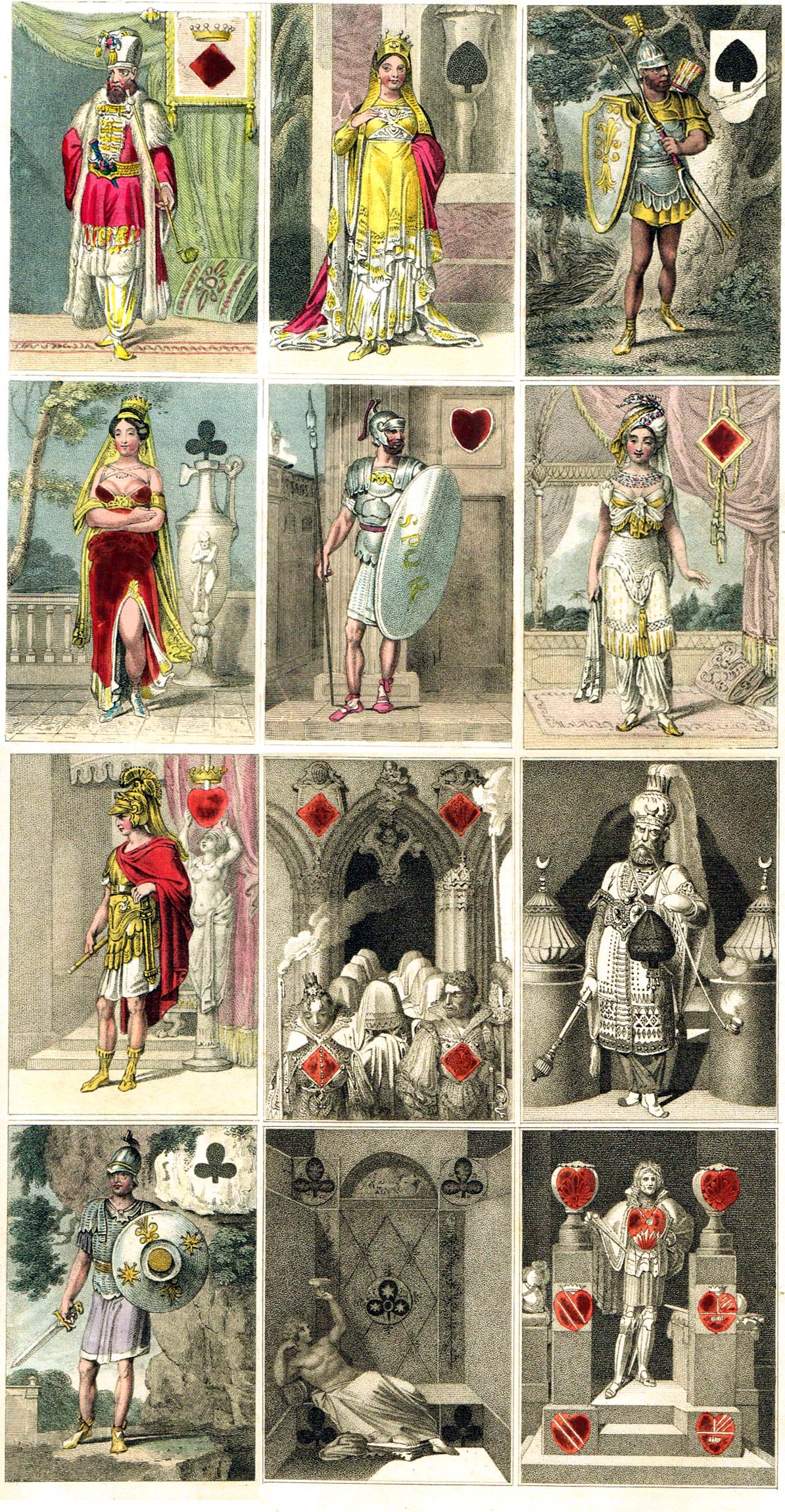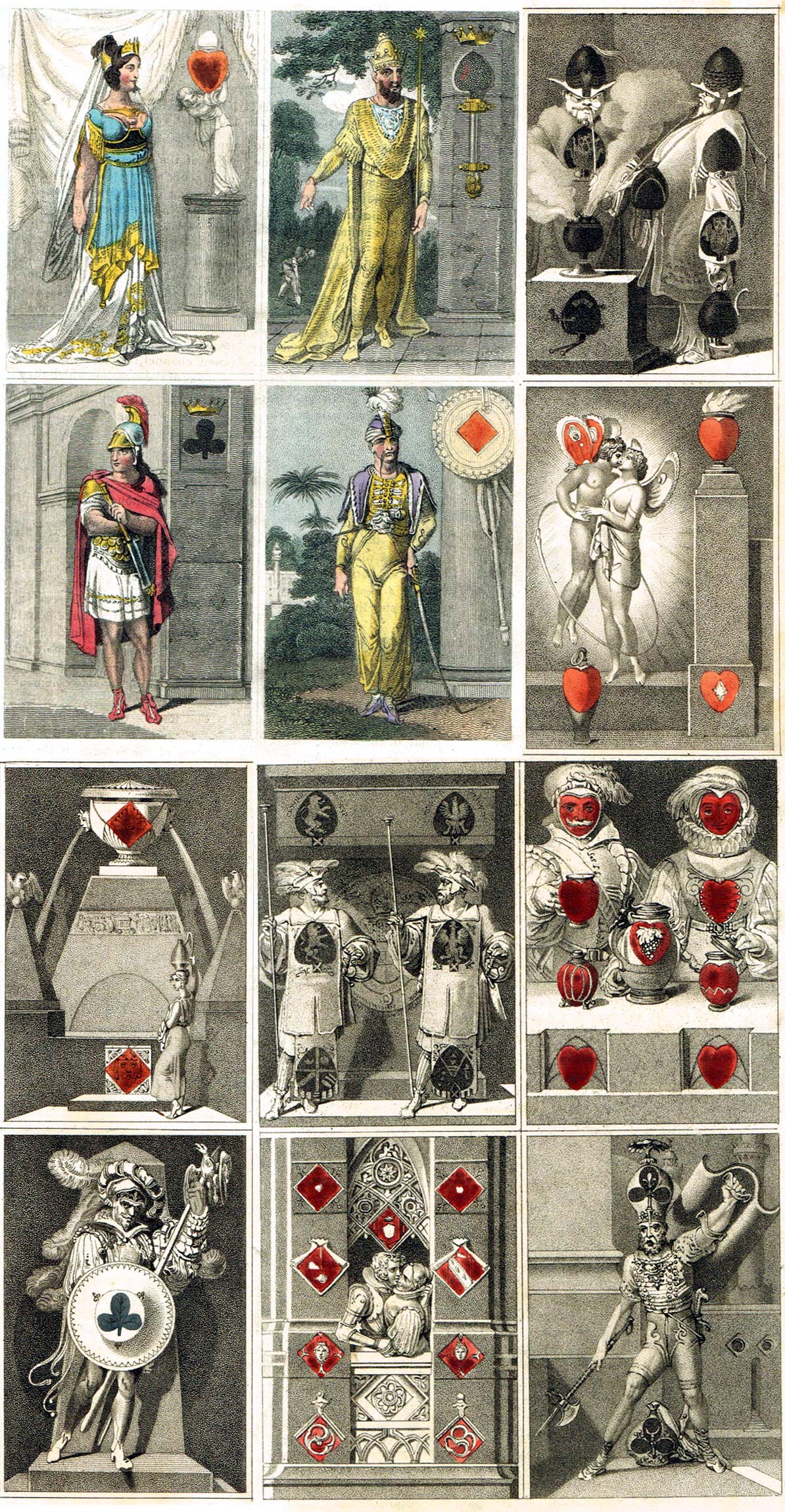Transformation of Playing Cards
The best-known fantasies with playing cards are the ‘Transformation’ cards. Hand-drawing ‘transformations’ onto a pack of ordinary playing cards, with the suit symbols forming part of the overall composition, became a popular pastime 200 years ago and a test of skill in drawing. A great deal of ingenuity is required in their design. The earliest printed sets were published at the start of the 19th century, often published in the form of an almanac or sometimes known as ‘metastasis’, and these became a fashionable and entertaining novelty.
In the strict sense of the word ‘Transformation’ the pips should be in their standard positions and form part of, or fit into, the overll image portrayed on the card.
Transformation Playing Cards are those in which the ordinary pip cards have been integrated into a new design thereby 'transforming' the playing card into a miniature graphic artwork. The pips must retain their traditional position and shape, so it is challenging to create a good overall composition. Some packs have standard court figures but others do not. Thus every card carries a different design, some of them extremely ingenious.
A New Form of Creative Art...
The exact date of their origin is unknown, but must have been within a few years of 1800. The idea became popular in late 18th or early 19th century as a pastime. Cards, maybe from incomplete packs, were 'transformed' using pen and ink, often with the addition of colour, into amusing miniature scenes. In those days packs did not have corner indices so there was more space available for the artwork. It is rather like transforming random squiggles or spots on a piece of paper into a picture, testing your ingenuity and artistic ability.
In France sets of “jeux à cartes transformées” often depicted satirical themes which earned them the name “jeux de cartes à rire”, or less often that of “jeux grotesques”.
A considerable fashion for them developed throughout the 19th century and many miniature masterpieces were created. Transformed packs were even made for fortune-telling. At the same time, printed almanacs were published containing drawings designed as playing cards and these also became a fasionable novelty. The first of these appeared in the “Taschenbuch für 1801”, published in Brunswick in 1800, representing scenes from Samuel Butler’s “Hudibras” (which lampoons the Puritans and was originally published 1663-1678) on eight cards designed by D.W. Soltan. This was not a complete pack, just eight cards, some of them duplicated.
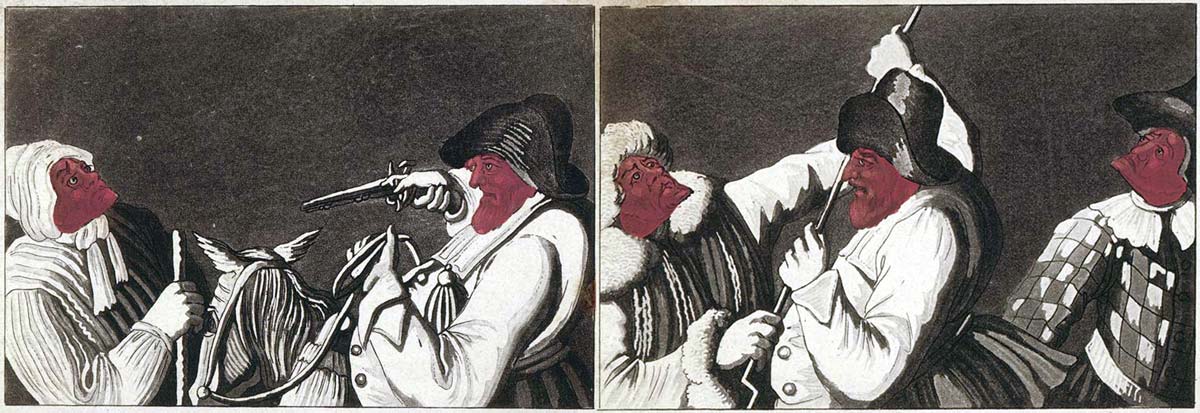
Above: two copper engraved ‘transformed’ playing cards (from a set of eight) designed by D.W. Soltan in c.1800 representing scenes from Samuel Butler’s satirical bestseller “Hudibras”. Images © Bibliothek für Bildungsgeschichtliche Forschung.
Twelve transformation cards were engraved by Christoph Haller von Hallerstein and dated 1802. This incomplete set was published the following year as “Bout-Rimes Pittoresques.” These early transformations were not intended to be used to play card games, but were a new form of creative art.
In c.1802 Jan Rustem (1762-1835) composed “Cartes Barbouillées” (“Kitsch Cards”) and “Cartes de Fantaisie” (“Fantasy Cards”) from different drawings and sketches (mythological, religious and domestic compositions, still lifes and portraits), deciding where to place the symbols and playing with stories, motifs and cultural allusions. However, it does not appear that the artist wanted to make a complete pack to play with.
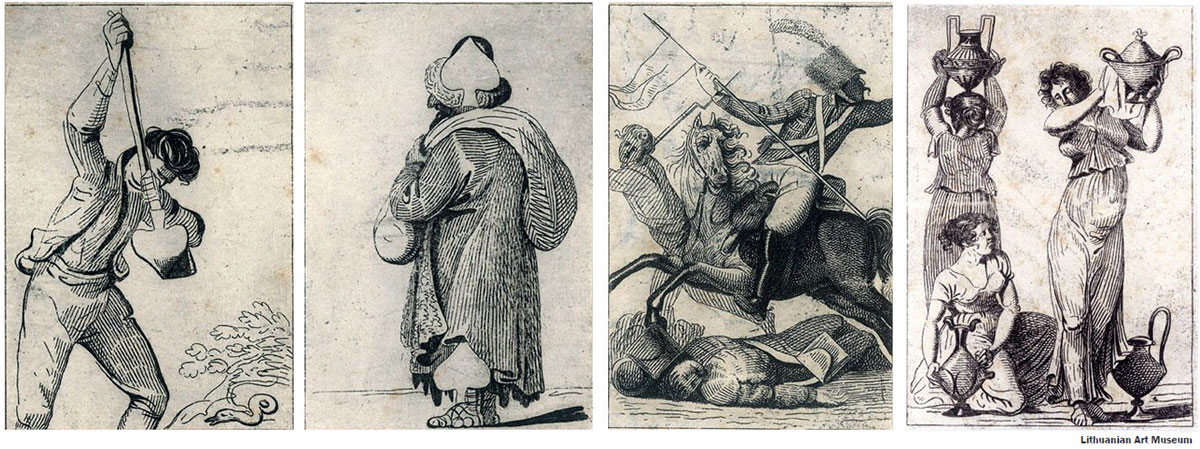
Above: “Cartes Barbouillées” transformed playing cards by Jan Rustem (1762-1835) in the Lithuanian Art Museum.
The first complete pack was printed in 1804 and published in 1805 by J. G. Cotta, a publisher and bookseller in Tübingen, Germany. The twelve court cards depict characters from Friedrich von Schiller's tragedy Die Jungfrau von Orleans (The Maid of Orleans) but the transformed pip cards are unrelated see more→
Cotta went on to publish a total of six almanacs of transformation packs.

Above: pip cards from J. G. Cotta's “Classical Antiquity” transformed playing cards, designed by Charlotte von Jennison-Walworth, published in 1806.
19th century hand-drawn packs are now extremely scarce... some of them contain original ideas, humorous caricatures or comical satires of the theatre, politicians or opera stars, or else epic heroes of classical antiquity and so on. Some of them tell a story or recount a nursery rhyme. Others contain contemporary social scenes including ethnic stereotypes which might be incorrect today, showing how social attitudes have changed. Whilst many are ingenious in their design, others do not display so much originality; if the pips do not fit in with the design they are placed therein just the same. We can imagine families in their drawing rooms, by the fireside, reading, smoking, cross-stitching or doodling on old playing cards...
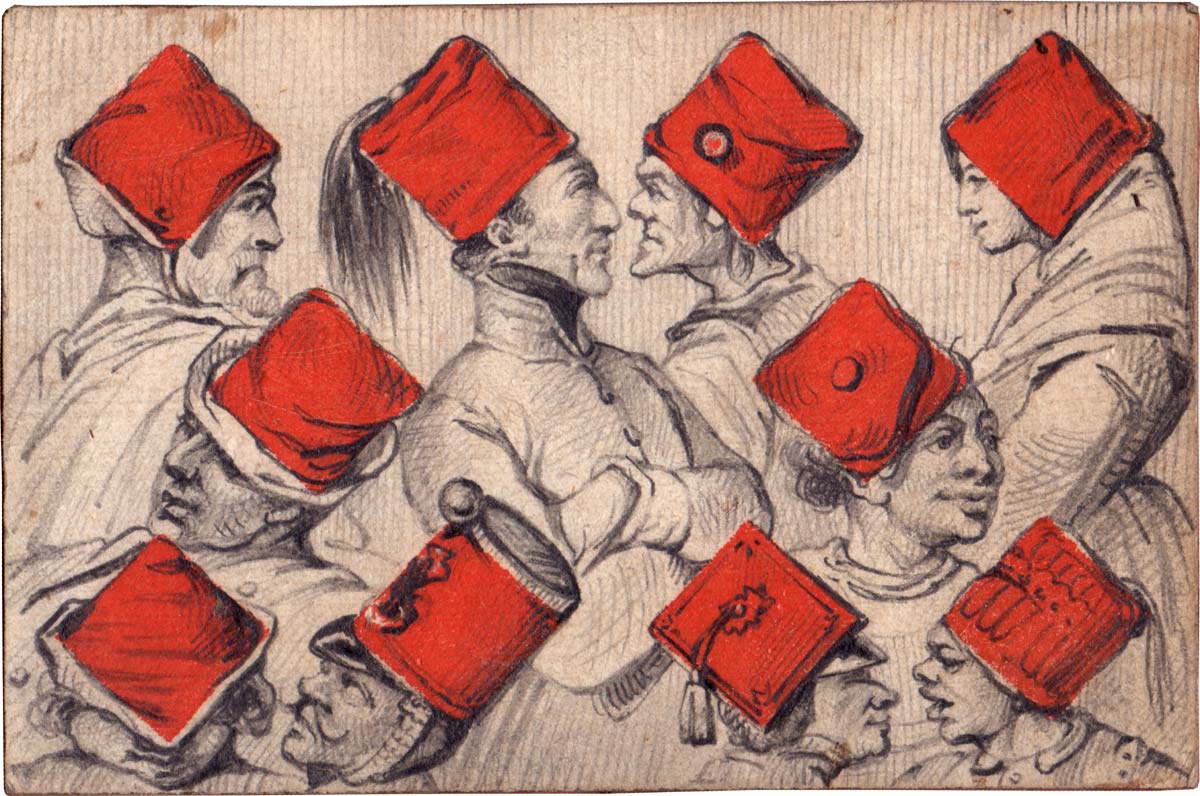
Above: hand drawn transformation card by a skilled artist on a 10 of diamonds, early to mid-19th century, possibly French. Courtesy David Potter.
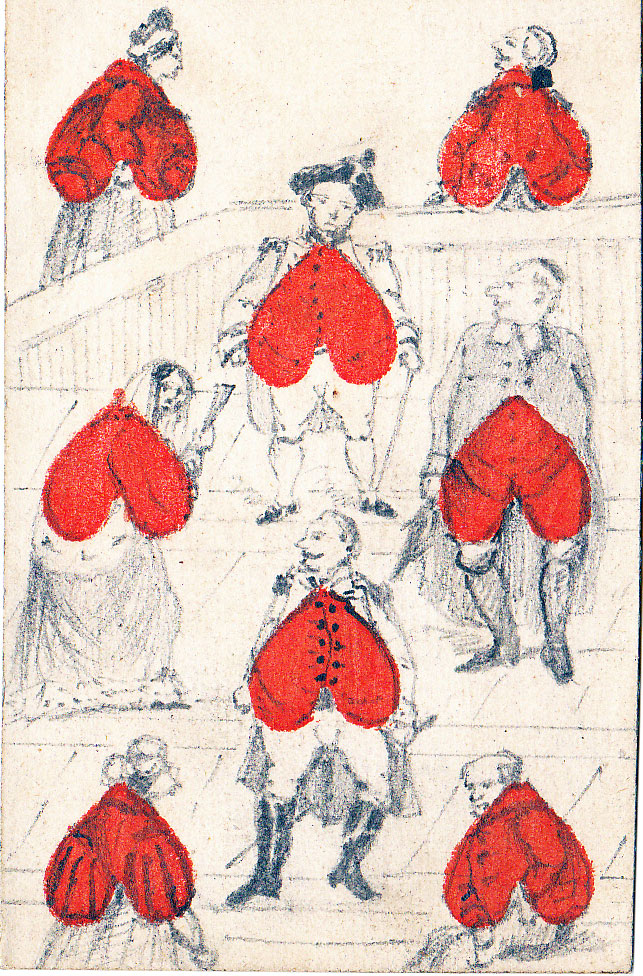
Above: hand drawn transformation card on an eight of hearts, mid-19th century, possibly French. Courtesy David Potter.


Above: "Metastasis" Transformation Cards, designed by John Nixon and published in 1811 by S & J Fuller, London. A new reproduction edition of this pack is available from the E.P.C.S. These designs were later re-used in other packs. Click here.

Rudolf Ackermann published a popular monthly periodical titled “Repository of Arts, Literature, Fashion etc” in 1818 and 1819 in which he included plates of original transformation playing cards as this was a popular topic amongst the gentry. Similar packs, differing slightly in design, were published in Austria, France and America.
Above: these cards first appeared as plates in "The Repository of Arts, Literature, Fashion etc." published by Ackermann in 1818-19. There were 52 cards in total. Images courtesy John Sings. See also: Bartlett Ackermann Transformation→

Generally-speaking, cards can be ‘transformed’ in several different ways. One method is to design a scene which occupies the entire card and cleverly incorporates the pip symbols into the design. Another method is to transform each pip into a flower or insect so that the result shows, say, six beetles moving across the card. In some cases the pips themselves are transformed into faces which become part of a caricature. Cards can be oriented the way which best suits the artist; upright, inverted or landscape. Extra colours can be added as highlights or illumination.
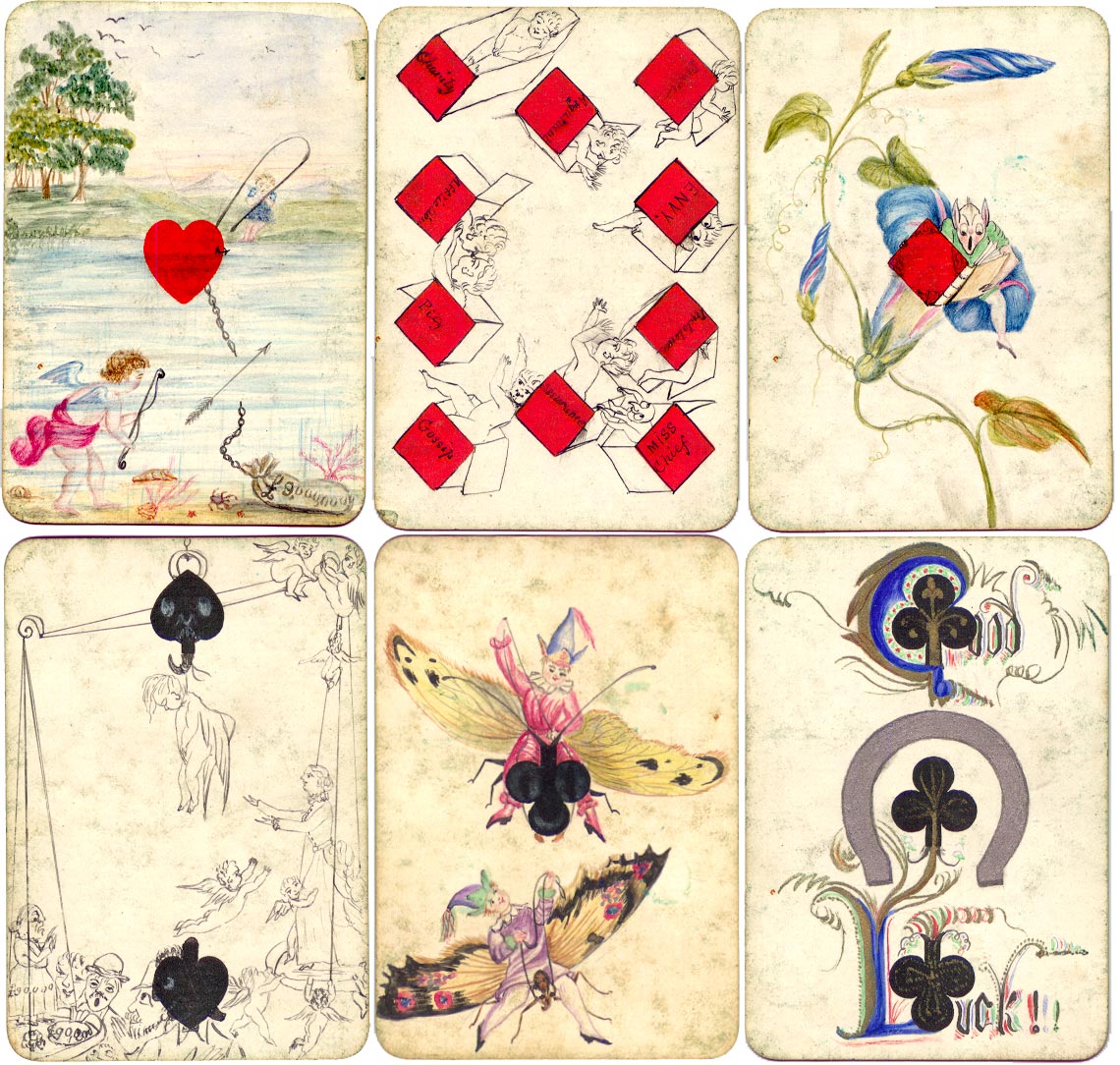
Above: hand drawn and painted onto a De la Rue pack, c.1890. Double-ended cards, no corner indices, round corners.

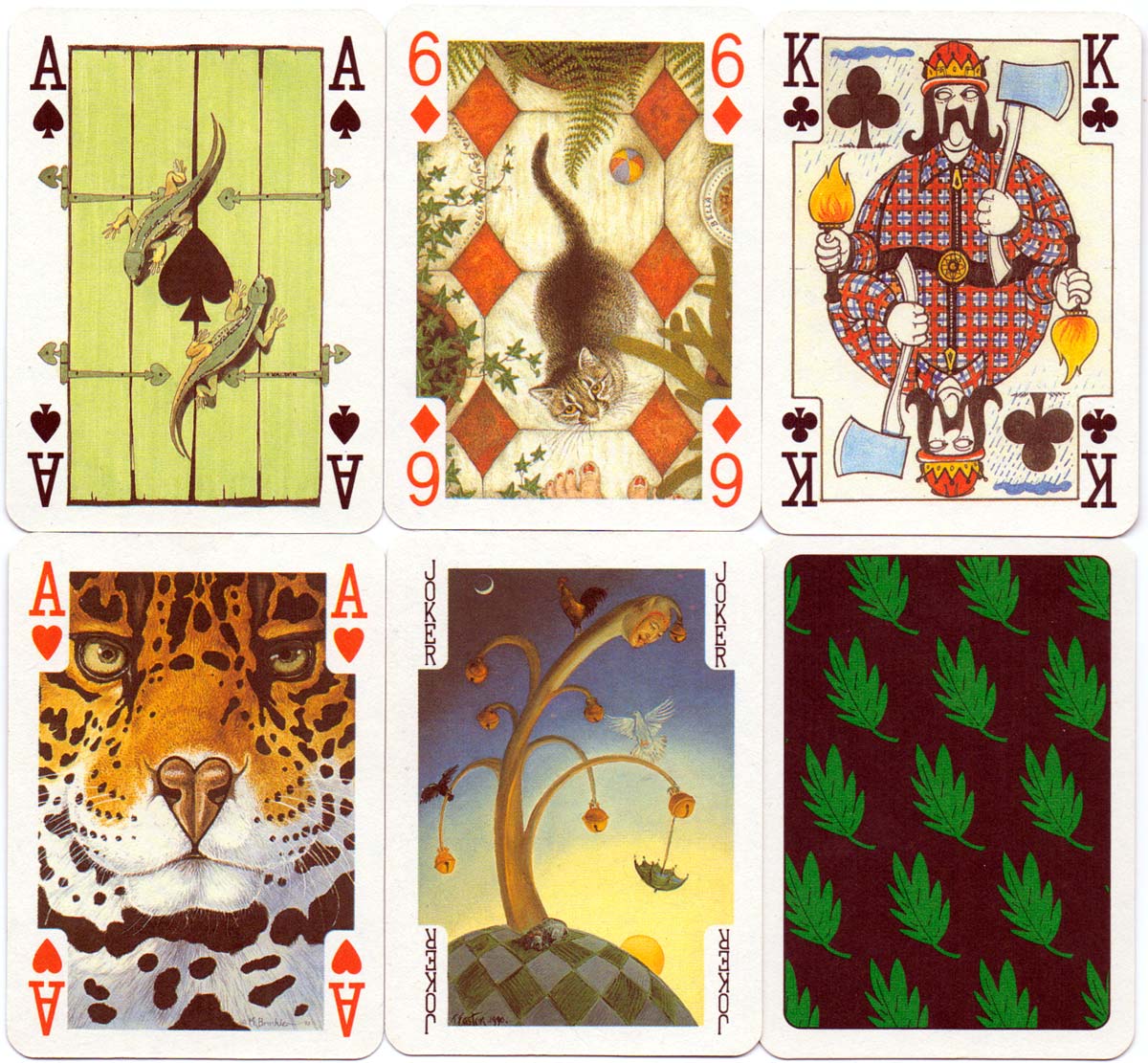
Above: "Art for the Earth" Playing Cards published by Andrew Jones Art for The Friends of the Earth, 1992. Royalties from the sale of the pack went towards the campaign to sustain the world's tropical rainforests.

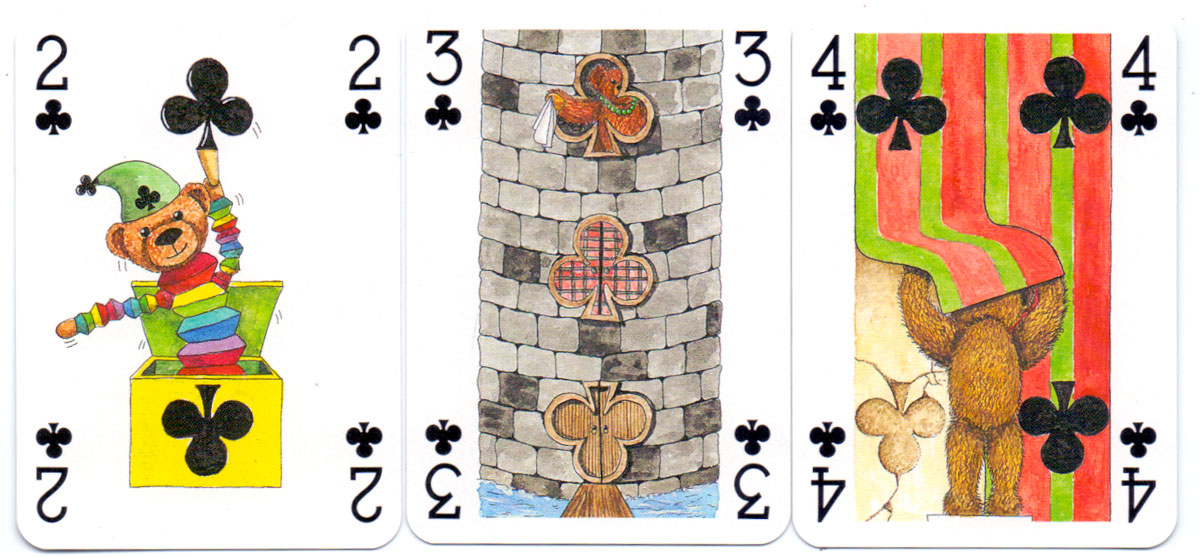
Above: three cards from Peter Wood's 'Teddy Bears' Transformation pack of playing cards (1994).
REFERENCES
Field, Albert: Transformation Playing Cards, U.S. Games Systems Inc., Stamford, CT, 1987
Mann, Sylvia: Collecting Playing Cards, Arco Publications, 1966
Mann, Sylvia: All Cards on the Table, Jonas Verlag/Deutsches Spielkarten-Museum, Leinfelden-Echterdingen, 1990
Strand Magazine: Playing-Card Squiggles, December 1910
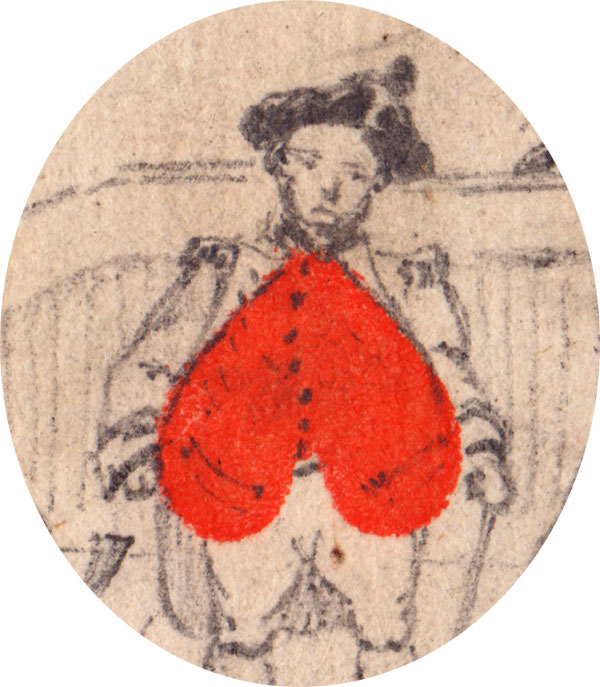
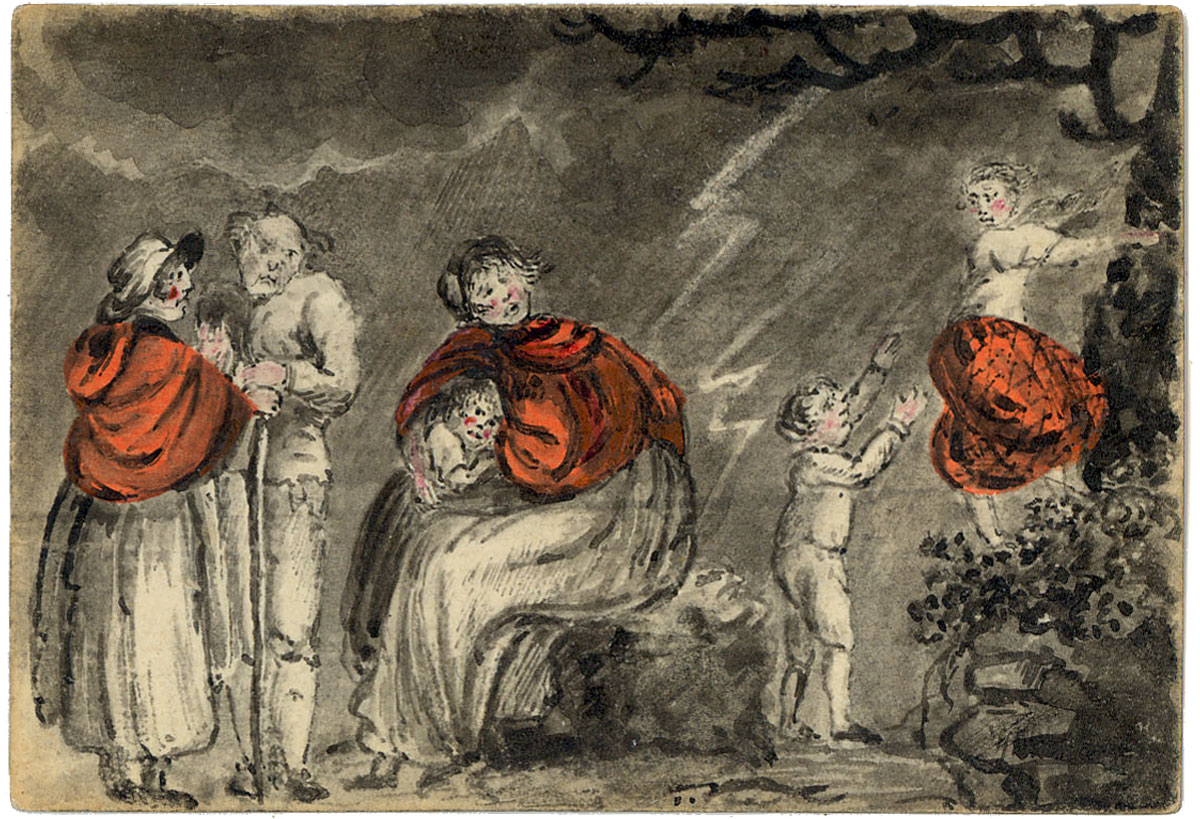
Above: hand-painted Transformation, c.1800-20
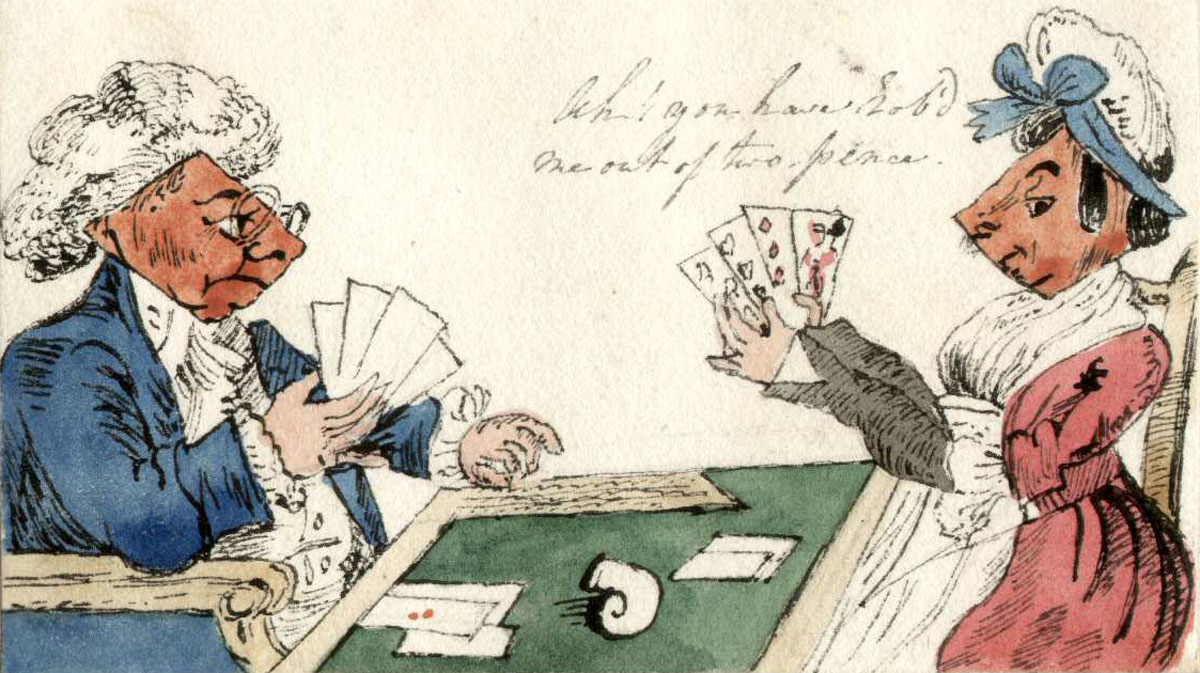
Above: John Nixon, 1803
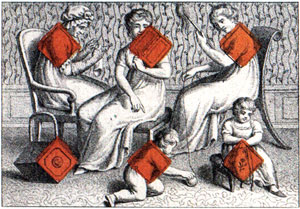
Above: Cotta Transformation playing cards, 1804
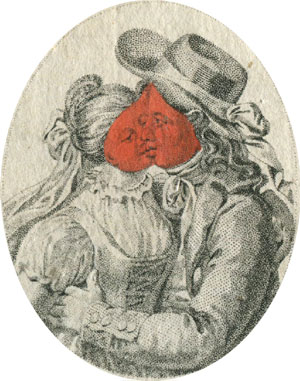
Above: The Kiss, 1808
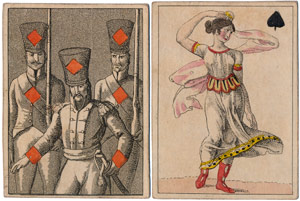
Above: H. F. Müller Transformation Vienna, 1809
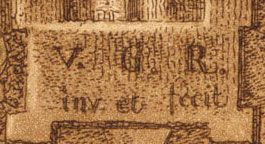
Above: Vincenz Raimund Grüner, Almanac, 1809
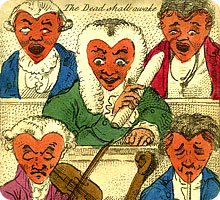
Above: Metastasis - 1811
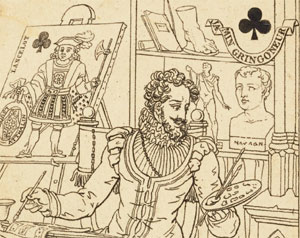
Above: “Cartes Comiques” by Louis Atthalin, 1817
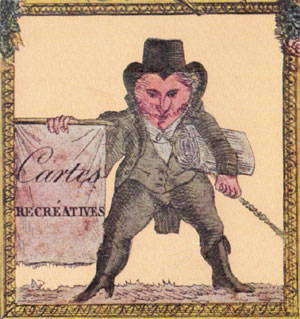
Above: Cartes Recréatives, 1819
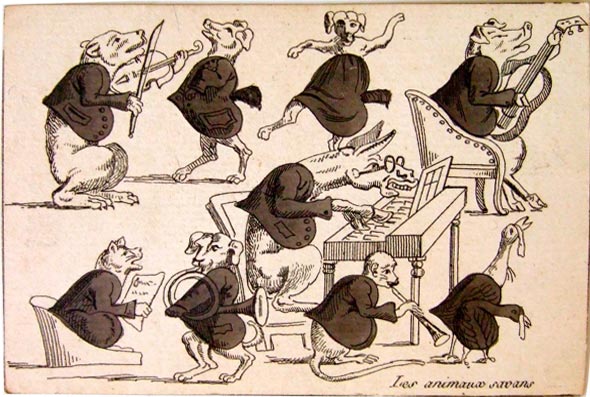
Above: Cartes à rire “des journaux”, 1819
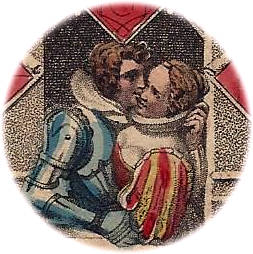
Above: Bartlett Ackermann, 1833
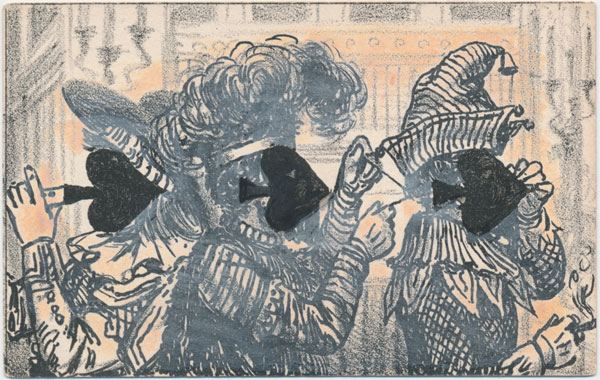
Above: Carl Arnold, 1856
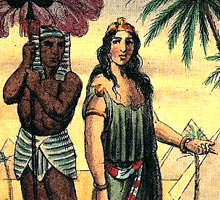
Above: Adolfo Matarelli (1832-1877)
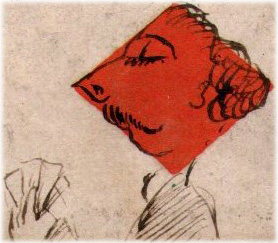
Above: transformed playing cards on a pack by Goodall & Son, c.1870, with Christmas-themed back.
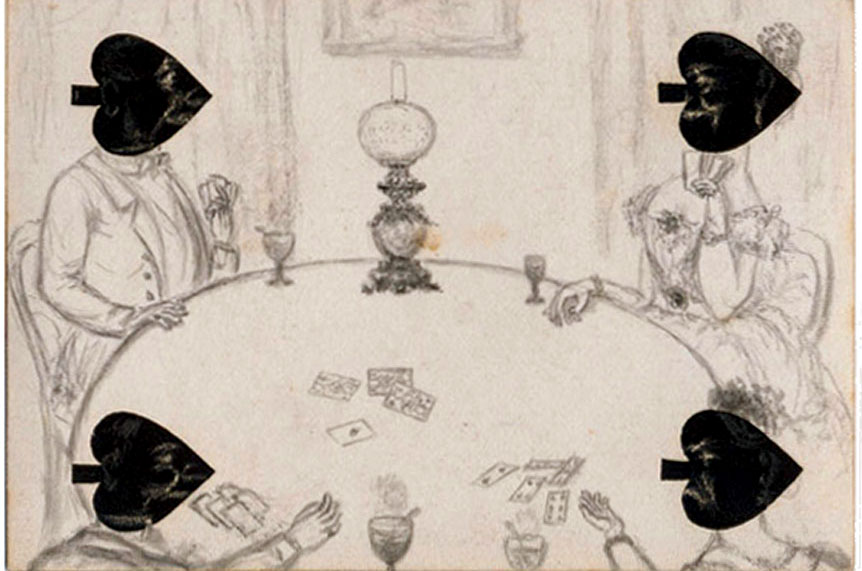
Above: Thomas Walters, 1874
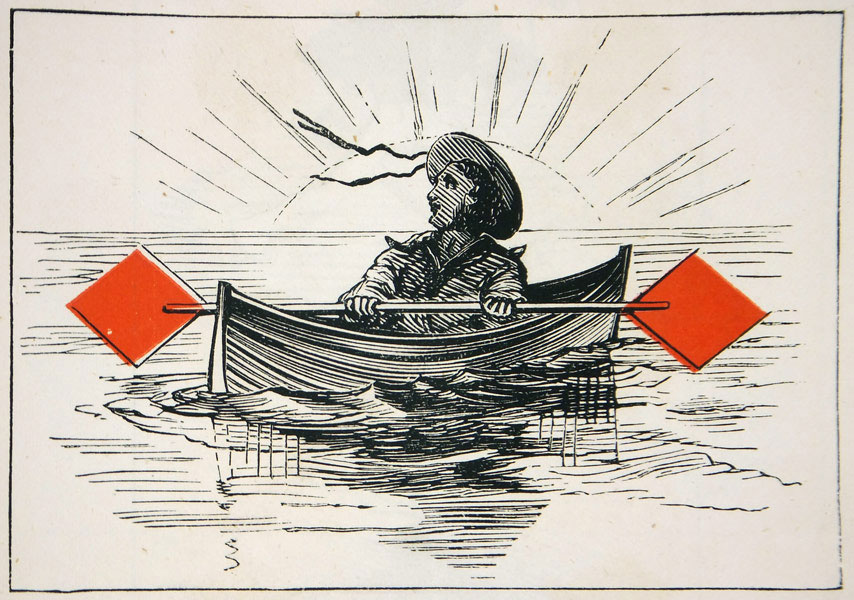
Above: “A Motley Pack” by George G. McCrae, c.1875
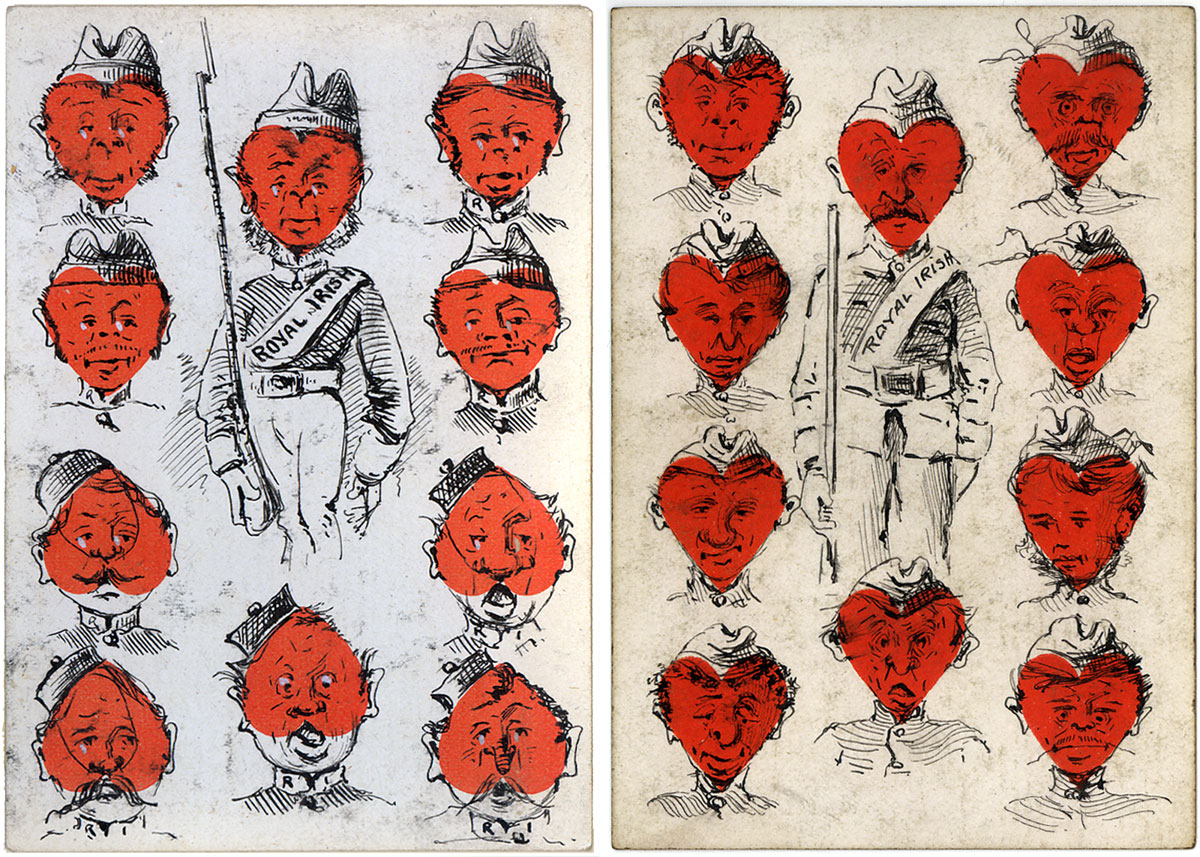
Above: a pair of hand-drawn Transformations, c.1875
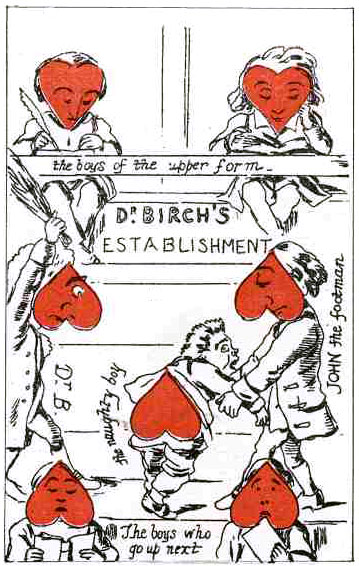
Above: Thackeray Transformation Cards, 1876
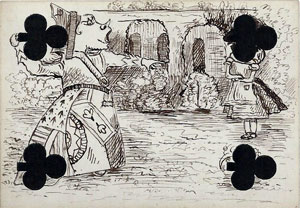
Above: hand-drawn Transformation, c.1880
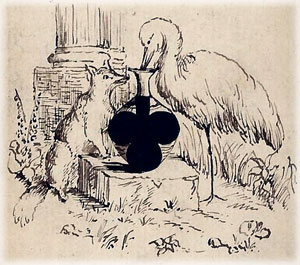
Above: hand-drawn Transformation, c.1880
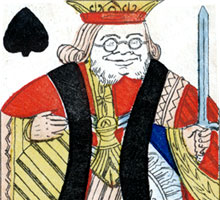
Above: Alfred Crowquill.
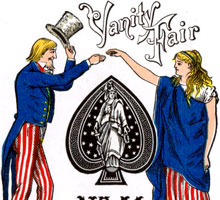
Above: Vanity Fair.
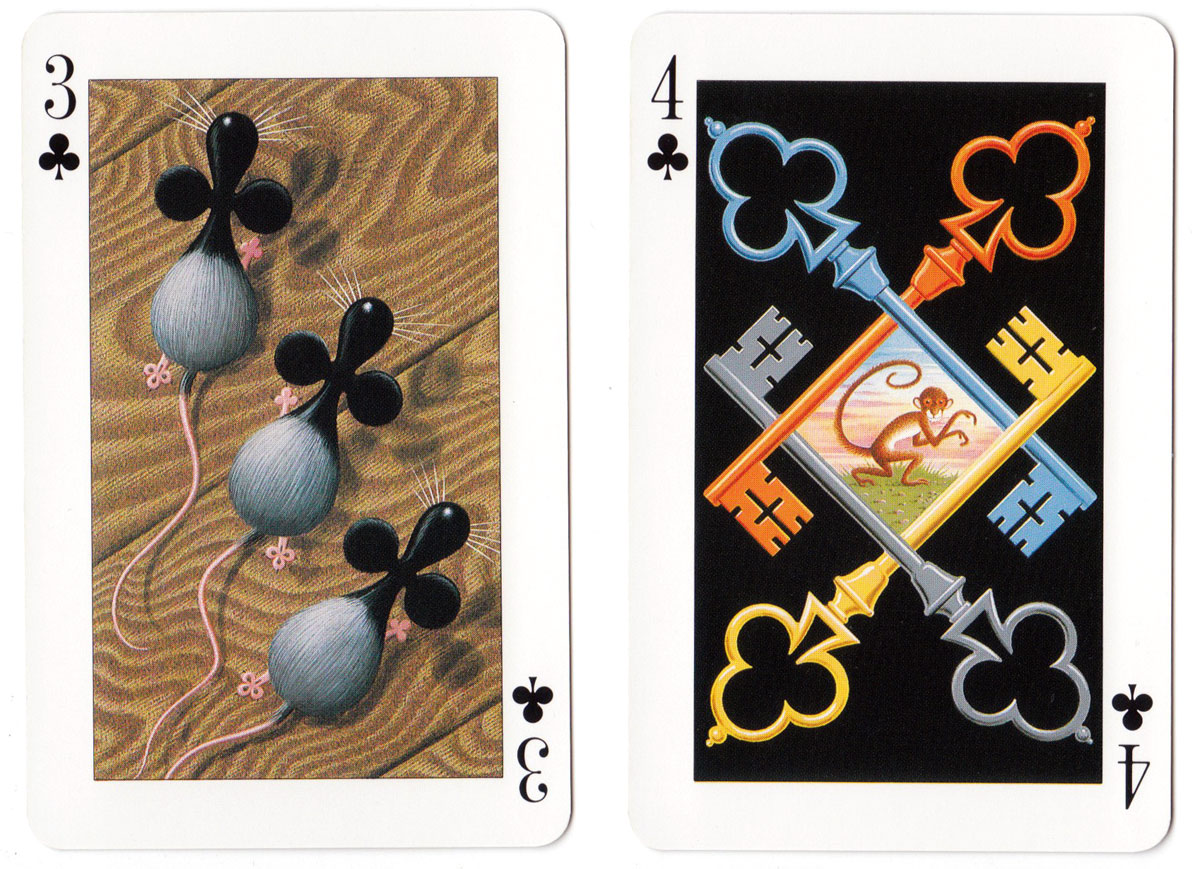
Above: Key to the Kingdom by Tony Meeuwissen, 1992.
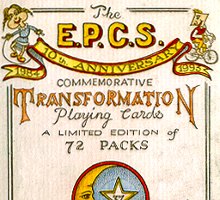
Above: E. P. C. S. 10th Anniversary Transformation by Karl Gerich, 1993.
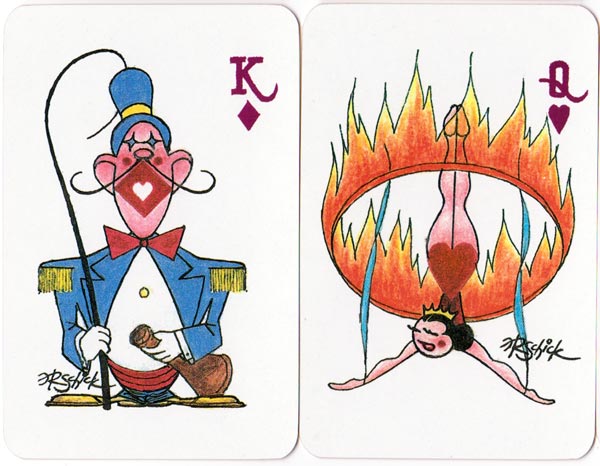
Above: Circus Transformation.
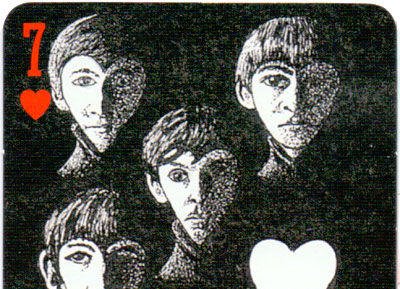
Above: 2000 Pips Transformation.
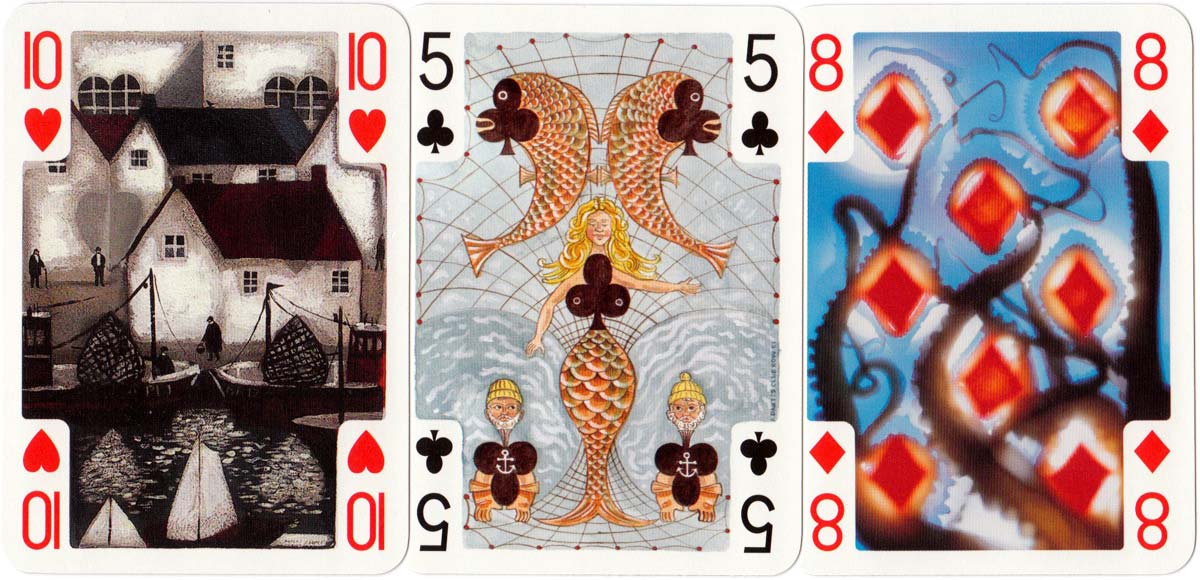
Above: “Under the Sea”, 2006.
Spanish Suited Packs
Spansih packs as early as the 16th century were sometimes 'transformed' by the addition of children and animals cavorting amongst the suit symbols. Similarly see the pack of cards by the Master of the Banderoles→
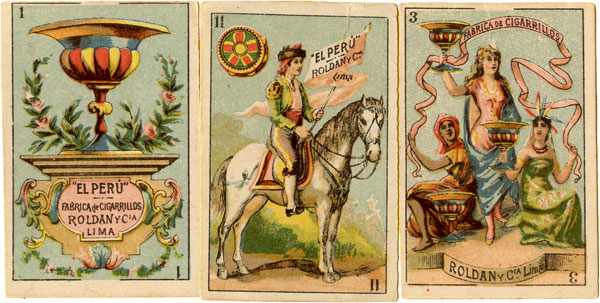
Above: Fabrica de Cigarrillos Roldan y Cia, Lima, Peru, c.1890.
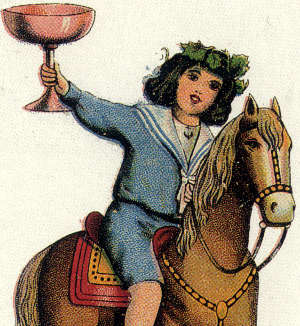
Above: Litografías Industrias Madriguera, Barcelona, c.1896.

Above: Zoo Comics by Litografía Ferri, 1968.
See also: Pack of Dogs Mermaid Queen Bag of Bones Kitten Club Palladin Curator

By Simon Wintle
Member since February 01, 1996
Founder and editor of the World of Playing Cards since 1996. He is a former committee member of the IPCS and was graphics editor of The Playing-Card journal for many years. He has lived at various times in Chile, England and Wales and is currently living in Extremadura, Spain. Simon's first limited edition pack of playing cards was a replica of a seventeenth century traditional English pack, which he produced from woodblocks and stencils.
Trending Articles
Popular articles from the past 28 days
Related Articles
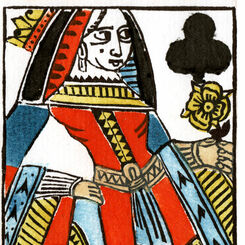
Woodblock and Stencil Queen of Clubs
A limited edition art print of the Queen of Clubs 1984 woodblock joker.
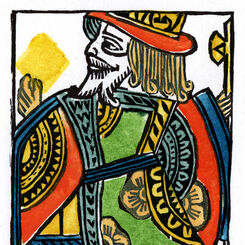
Woodblock and Stencil King of Diamonds
A limited edition art print of the King of Diamonds 1984 woodblock joker.
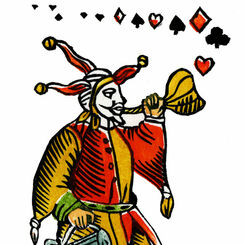
Woodblock and Stencil Joker
A limited edition art print of the 1984 woodblock joker.
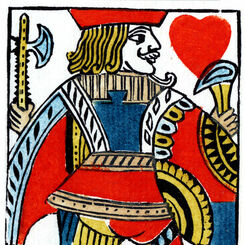
Woodblock and Stencil Jack of Hearts
A limited edition art print of the Jack of Hearts 1984 woodblock joker.
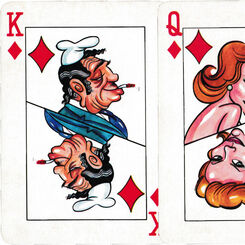
Le Ore playing cards
Caricatures of famous personalities from the late 1970s for the Italian magazine Le Ore.
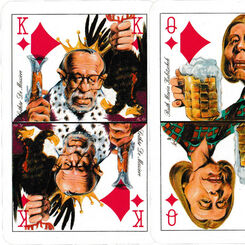
Postabank 3
Caricatures of German personalities on a promotional pack for a Hungarian commercial bank.
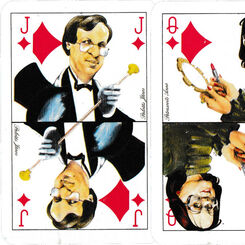
Postabank 1
Caricatures of Hungarian politicians on a promotional pack for a commercial bank.
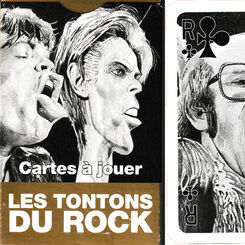
Les Tontons du Rock
Caricatures of rock and pop stars in black and white by Charles Da Costa.
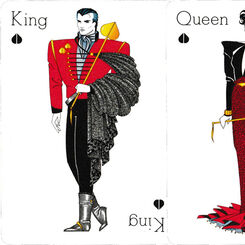
Paco Lobo
Highly original and striking designs by Paco Lobo for the fashion house of the same name.
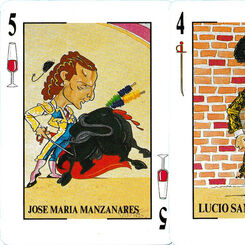
Toros: De El Cordobés a Espartaco
Publicity pack for the Spanish newspaper Ya with caricatures of famous bullfighters by Fernan...
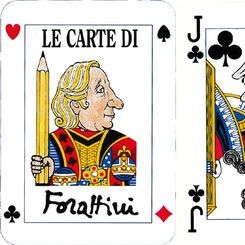
Le Carte di Forattini
Political caricatures by Giorgio Forattini published by Arnoldo Mondadori Editore, Italy, 1993.
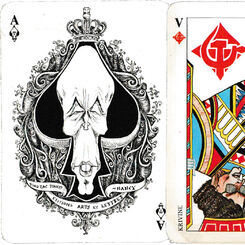
Jeu de la Vme
A political pack designed by Pino Zac and published in 1977 by Editions Arts et Lettres.
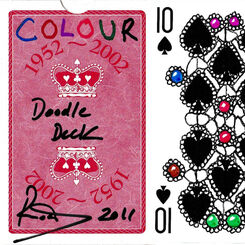
Colour doodle deck
“1952-2002 commemorative deck” customised with doodles by an uncredited artist, UK, 2011.
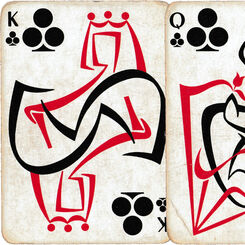
Jeu Boléro
Sweeping, semi-abstract designs by J.L. Jolin in red and black only.
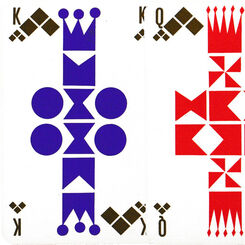
Knoll International
Geometric designs by the French artist Jean Garçon for Knoll International, the furniture company.
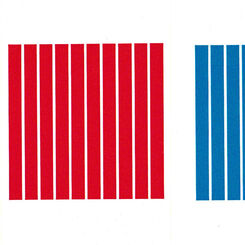
Marcello Morandini
Modern designs by Italian artist Marcello Morandini using the simplest of forms and colours.
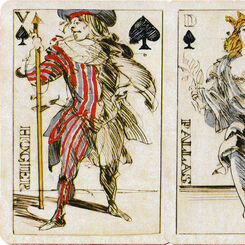
Claude Weisbuch
Free reinterpretation of the traditional Paris pattern courts by the artist Claude Weisbuch.
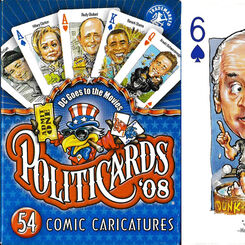
Politicards 2008
Politicards ’08 with caricatures cast as characters from classic movies, USA.
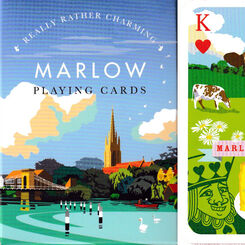
Marlow playing cards
Visitor attractions and businesses to be found in Marlow, Buckinghamshire.
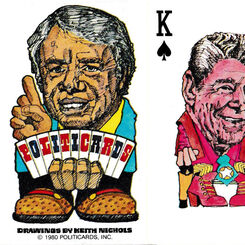
Politicards 1980
Politicards 1980 in which Ronald Reagan defeated the incumbent Jimmy Carter, with caricatures by Kei...
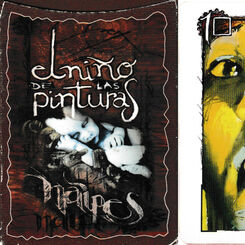
El Niño de las Pinturas
Forty-nine distinctive works by Spanish graffiti artist Raúl Ruiz.
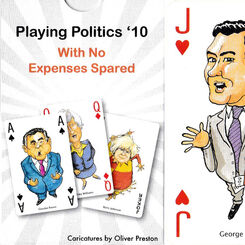
Playing Politics 2010
“Playing Politics ’10: With no expenses spared” featuring caricatures by Oliver Preston, published b...
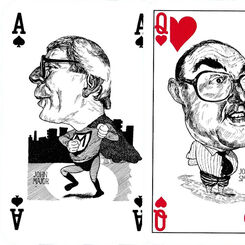
Playing Politics ’92: Pack of lies
Playing Politics ’92: Pack of lies with caricatures by Grant Robertson, UK.
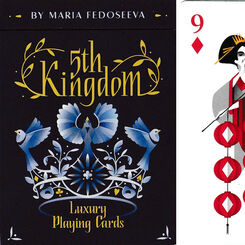
5th Kingdom playing cards
5th Kingdom Luxury playing cards designed by Maria Fedoseeva, USA, 2020.
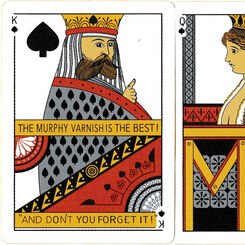
Murphy Varnish pack
Reproduction of the 1883 Murphy Varnish transformation pack, USA, 2019
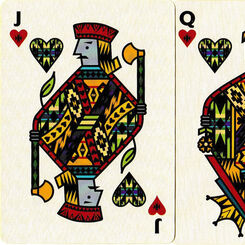
Pendleton playing cards
Pendleton playing cards inspired by indigenous American artwork, USA, 2019.
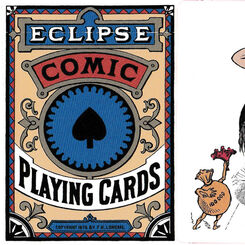
Eclipse Comic playing cards (reproduction)
Eclipse Comic playing cards is a reproduction of the first transformation pack printed in the USA in...
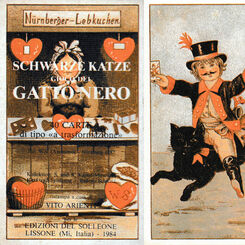
Schwarze Katze (or Gioco del Gatto Nero)
Reproduction of a 40-card transformation pack with designs by “WS”, adapted for the game of Black Ca...
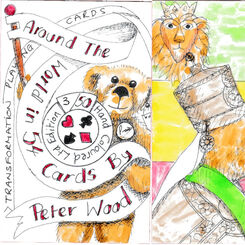
Around the world in 54 cards
“Around the world in 54 cards” hand-coloured transformation pack produced by Peter Wood, United King...
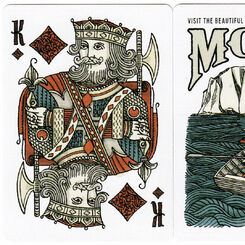
Old School Playing cards from Moon
Designed and published by Leo Scherfig
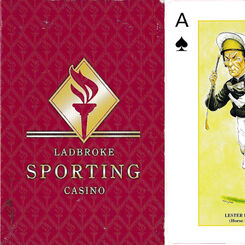
Ladbroke Sporting Casino
Ladbroke Sporting Casino caricature cartoon playing cards, U.K, c.2006.
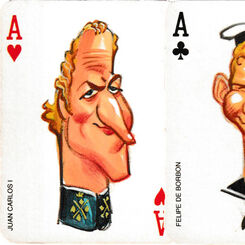
El Jueves playing cards
Caricatures of 52 famous Spaniards for the satirical magazine “El Jueves”.
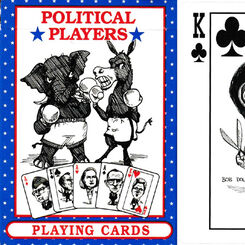
Political Players
Caricatures by Garth Stackhouse of American politicians involved in the 1996 presidential campaign.
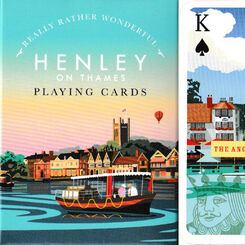
Henley-on-Thames playing cards
Calendar events and visitor attractions to be found in Henley-on-Thames, Oxfordshire.
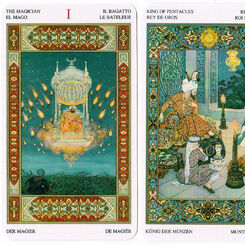
Tarot of the Thousand and One Nights (1001 Nights Tarot)
This tarot deck captures the idealised Eastern world's magic from the eighteenth and nineteenth cent...
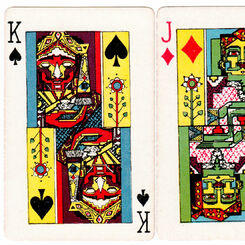
ORIENT The Queen of Cards
A unique Art creation of Subho Tagore
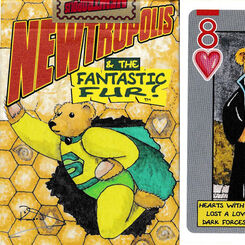
Newtropolis and the Fantastic Fur
Newtropolis and the Fantastic Fur: Heroes vs. Villains playing cards illustrated by Peter Wood, 2015...
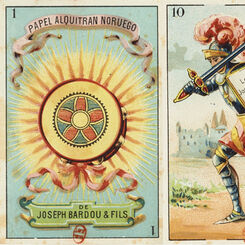
Joseph Bardou & Fils cigarette papers
Delightful pack advertising Joseph Bardou & Fils cigarette papers for the Philippines.
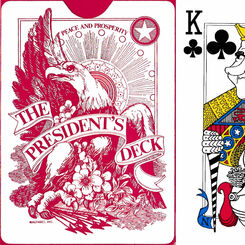
The President’s deck
The President’s deck, USA, 1972
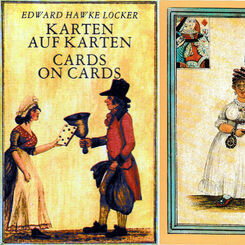
Cards on Cards (E.H. Locker)
Artist Edward Locker’s view of London life in 1799, using every card in the pack as part of the pict...
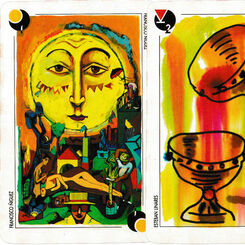
Baraja Española de Pintores Murcianos
A Spanish-suited pack as conceived by 48 different artists from the region of Murcia.
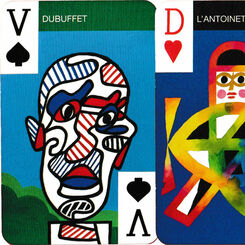
Le Jeu d’Issy
Bold designs by Jacques Auriac representing people and enterprises for which the town of Issy-les-Mo...
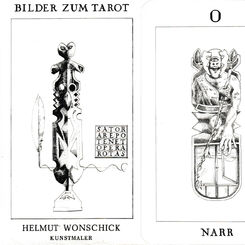
Bilder zum Tarot
Detailed pen and ink drawings of the major arcana by the German artist Helmut Wonschick.
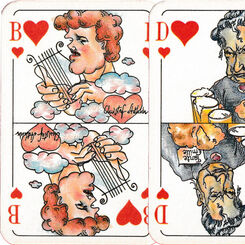
Das Tübinger Skatspiel
Pack devised by Volker Scheub depicting characters associated with the city of Tübingen.


